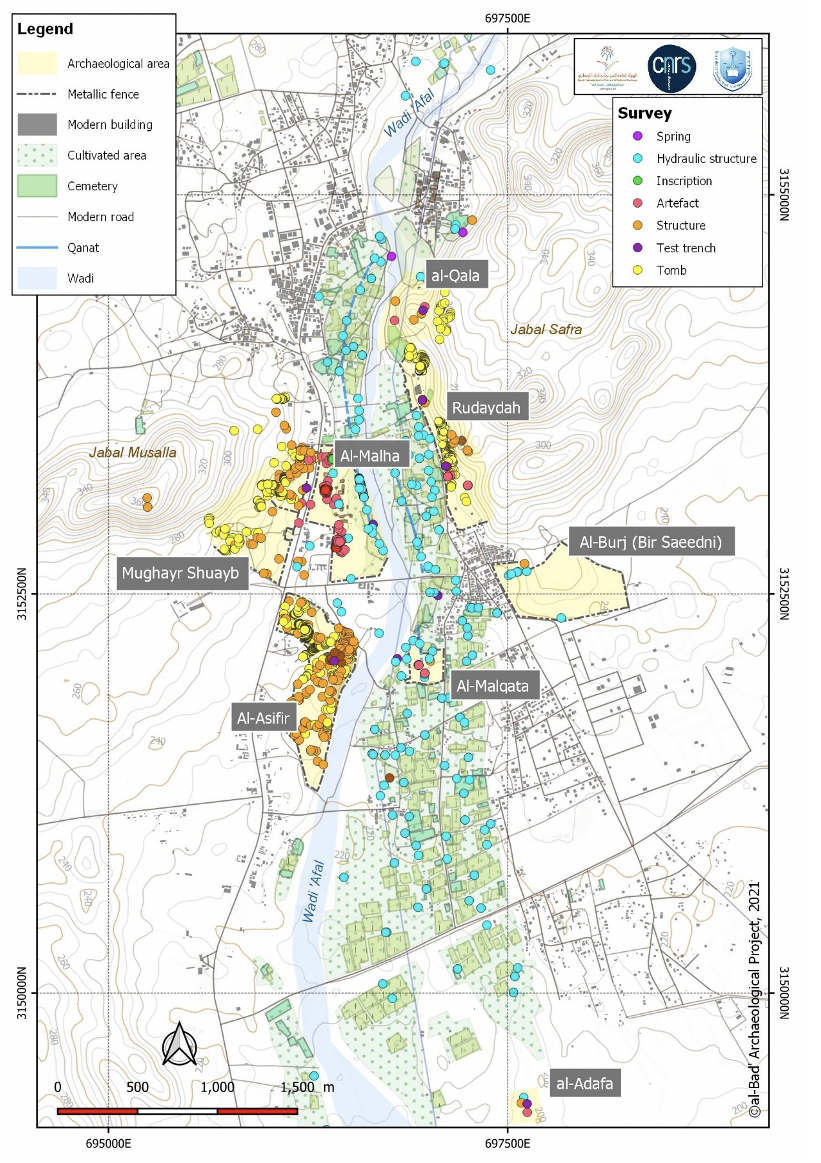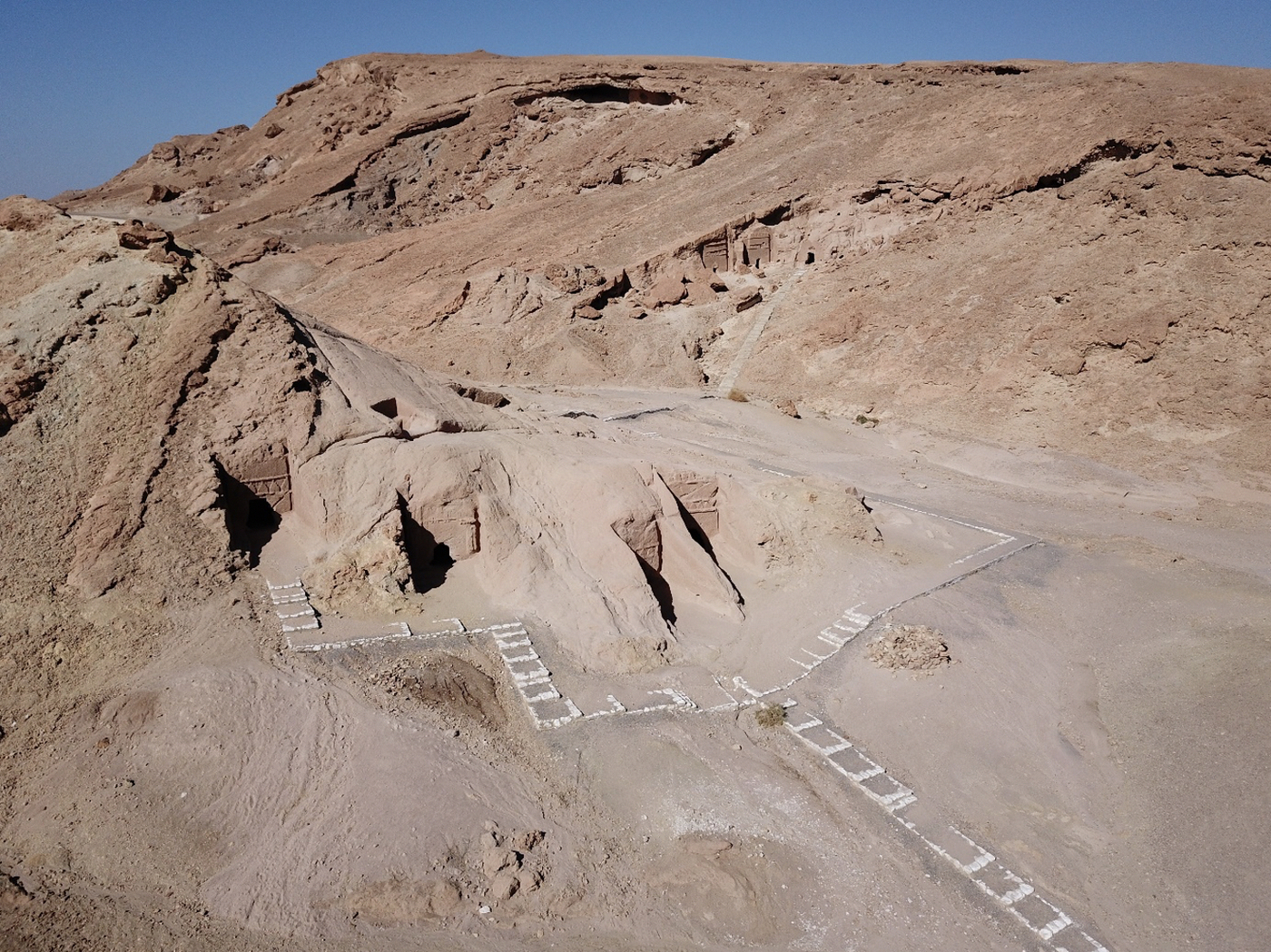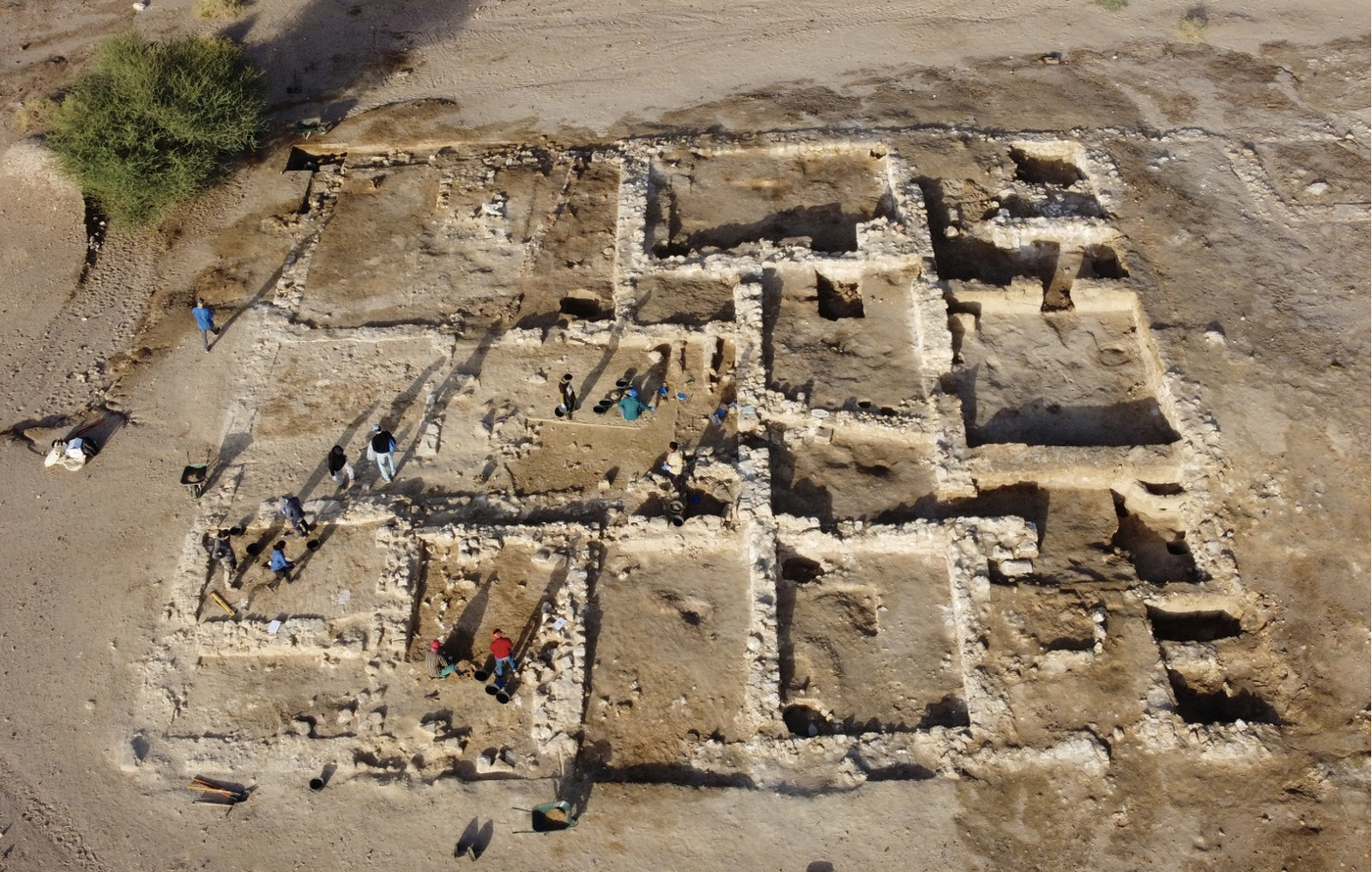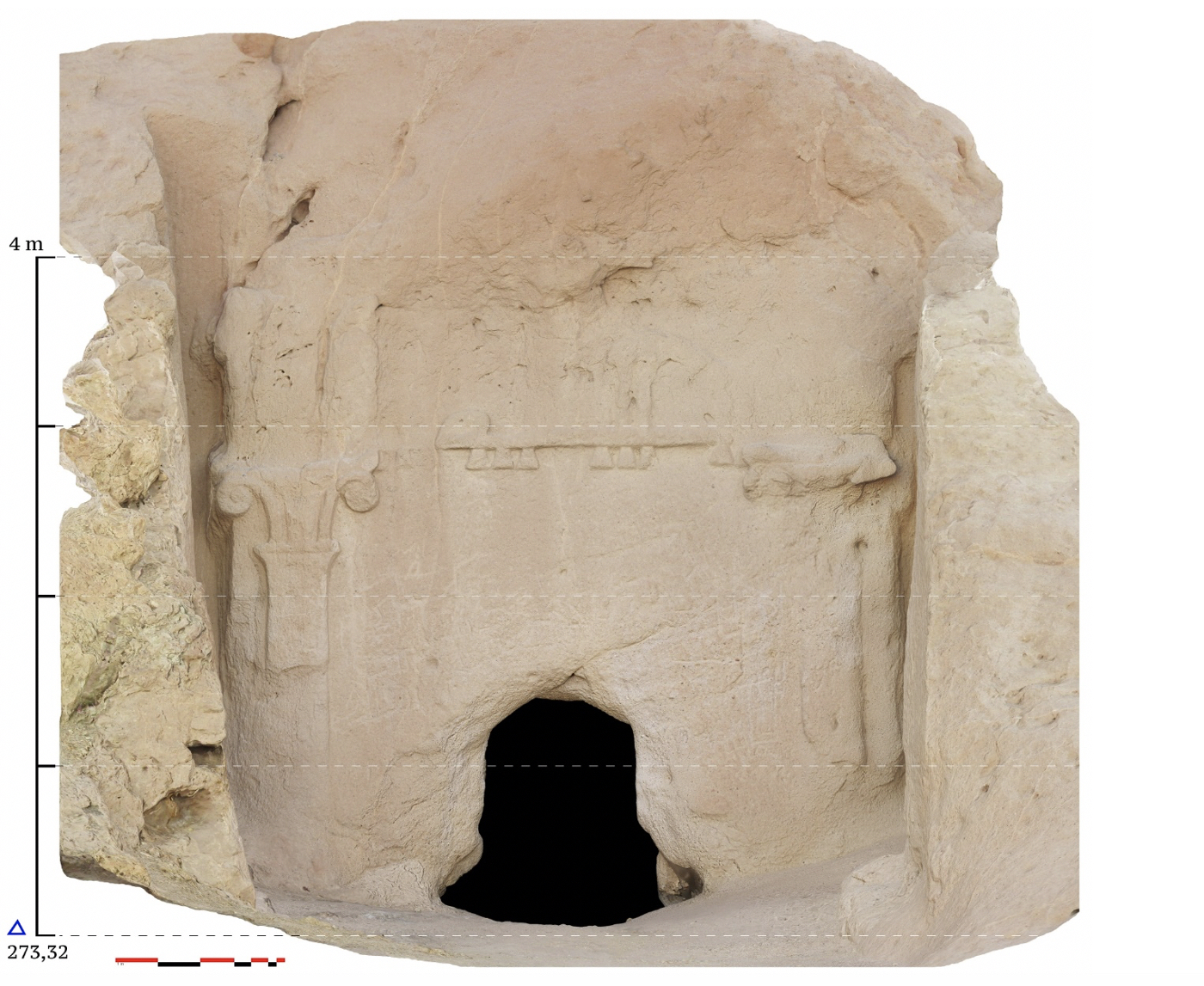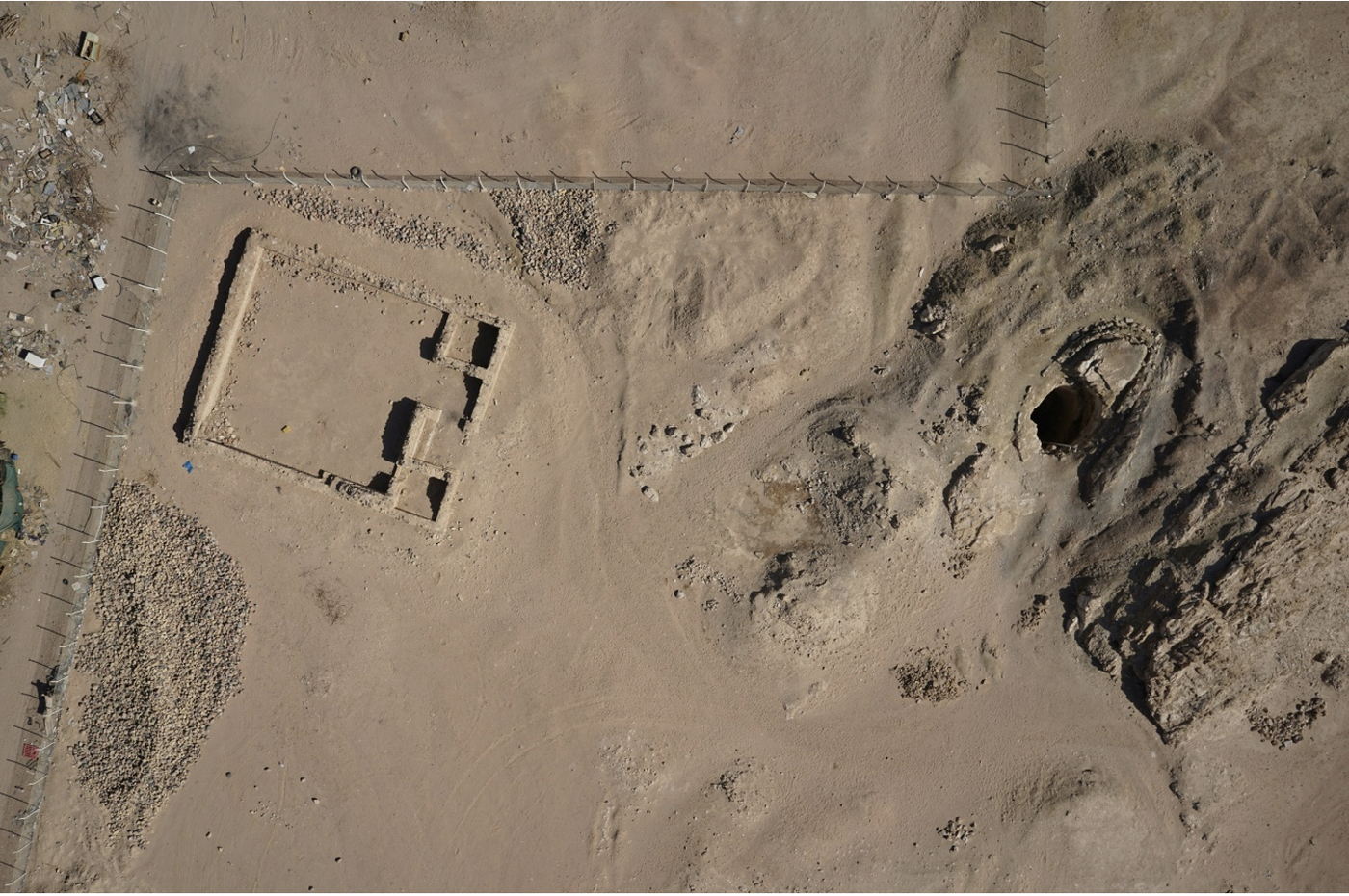Al-Badʿ
In northwestern Arabia, the oasis of al-Badʿ, ancient Islamic Madyan, has been the focus of archaeological research since 2017. The oasis is best known for the presence Nabatataen rock-cut tombs. In the late 2nd millennium BCE, the oasis was likely part of a regional geopolitical entity called Madian or Midian.
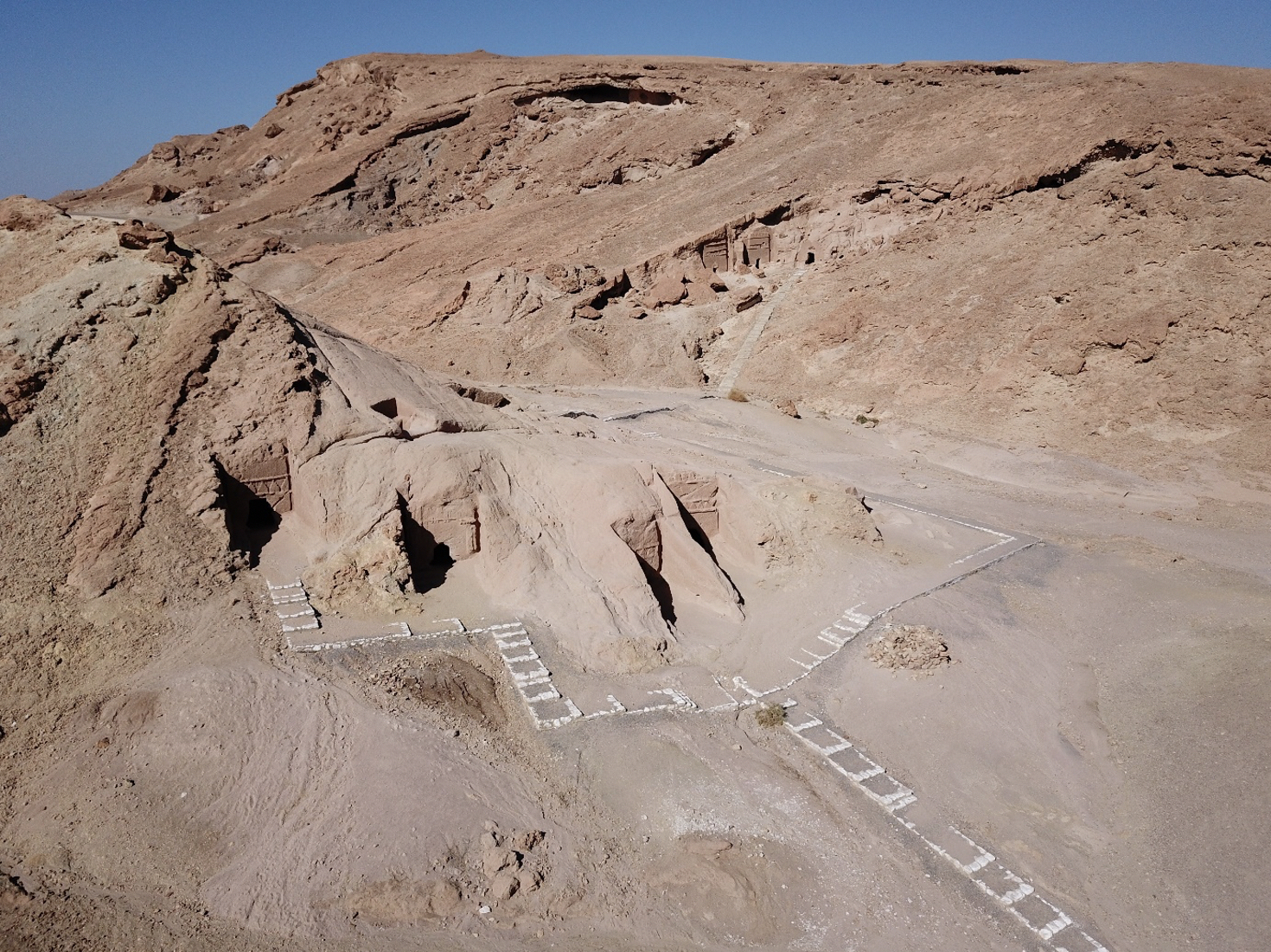
A joint Saudi-French project started a comprehensive survey of this oasis in 2017 and excavations in 2018.
The oasis of Al-Badʿ
Situated east of the Gulf of ʿAqaba in a seismic region, the oasis of al-Badʿ occupies an area about 7km long with variable widths between 0.5 km and 2 km. The oasis was visited and mentioned several times by Arab geographers during the medieval period, and by Western travellers following Rüppel’s visit in 1829.
The first human settlements in the oasis
The first human traces in the al-Badʿ region go back to the Palaeolithic period. Within the confines of the oasis, the oldest indications of (semi-)permanent occupation date to the Late Neolithic, the first half of the seventh millennium BCE. At that time a small community, cultivating cereals, settled on a high terrace of conglomerates at the Asifir site. Following this first installation, there is a long gap of three millennia in the archaeological record that remains unresolved. Preliminary Investigations suggest the existence of a small village of stone dwellings from the end of the fourth millennium BCE on the site of Rudayda, on the other side of Wadi ʿAfal.
The occupations of the first millennium BCE.
Much later, during the first millennium BCE, recent archaeological investigations now emphasise a high density of occupation at the oasis - the oldest of which probably falls at the end of the second millennium BCE (previously known as ‘Madianite period’). The occupation at this time appears to be concentrated on the eastern shore of Wadi ʿAfal on a gypsum and colluvial terrace. Two settlement sites (Rudayda South and al-Qala) and a necropolis (al-Qala East) date back to this vast chronological range.
Al-Badʿ and the Nabataeans
Along with Hegra and Dumat, al-Badʿ is considered to have been one of the main Nabataean sites in north-western Arabia. The area of Mughayr Shuʿayb, which contains ostentatious rock-cut tombs, is the most well documented by previous travellers and explorers. Field data (pottery, coins and inscriptions) collected during previous surveys confirmed a dense occupation from the middle of the first century BCE to the second century CE, but also until the Byzantine period.
Recent observations enable us to understand more clearly the organisation of the Nabataean-Roman occupation at the oasis, which comprised a main city (al-Malha) of approximately 26ha, surrounded by necropoleis and a series of small dispersed hamlets. The excavations in the city revealed in particular an almost square domestic building featuring 17 rooms in its upper Byzantine phase. It also yielded a nice bronze lamp with acanthus leaves and two dolphins in a private bathroom dating to the Nabataean period. The presence of public buildings, a military fort, a probable citadel (al-Qala) and monumental rock-cut tombs, but also the presence of refined and abundant material culture, indicate that the oasis of al-Badʿ hosted local elites and functioned as the seat for regional administration during the Nabataean and Roman periods.
The identification of Madian (or Madyan)
The identification of Madyan with al-Badʿ comes from Arab-Islamic textual sources and is certain. Two sites (al-Malqata and al-Malha North) currently indicate sedentary occupation at the oasis of al-Badʿ during the Early Islamic period. Later, and until the establishment of the first mud-brick villages of the twentieth century, the only site at the oasis seems to have been the pilgrimage station of al-Burj, organised around the rock-cut well Biʾr Saʿidni, the so-called “Moses well”.
Research perspectives
The magnitude of the chronological sequence and the abundance of archaeological material confirm the major importance of the al-Bad' oasis, almost unknown only 5 years ago. The study of this major site will undoubtedly deliver resolutely innovative information for the knowledge of the history of the region in the years to come.
Scientific partners and financial support
In addition to the support from the Heritage Commission of the Ministry of Culture, the project benefits from the support of the King Saud University and many French institutions, in particular the French National Center for Scientific Research (CNRS), the Mondes sémitiques team at the laboratory Orient & Méditerranée (UMR 8167), the French Ministry of European and Foreign Affairs, the French Embassy in Riyadh, Hydroasis OPUS 2019 from Sorbonne University, the Labex Resmed (ANR-10- LABX-72 / ANR-11-IDEX-0004-02) and the French Centre for research on the Arabian Peninsula (Cefrepa).
Links
Publications
CHARLOUX G., Sahlah S.A. & Badaiwi W.A., 2021, « Madian revealed ? Assessing the history and archaeology of the oasis of al-Badʿ in north-western Arabia », Semitica & Classica 14, p. 97-142.Link
CHARLOUX G., Sahlah S.A., Badaiwi W.A., with the participation of Almadhi S.M., Al Timani A.E.K., Al Nawfal A.A., Al Qahtani M.A., Guadagnini K. & Larché F., 2021 (accepté, sous presse), « The Archaeological Project in Al-Bad‘ (Tabuk Province) _ 2017 Season », Atlal.
CHARLOUX G., Sahlah S.A., Badaiwi W.A., with the participation of Abady Mahmoud M.A., Almadhi S.M., Bernard P., Bigot L, Cosandey C., Crassard R., al-Shaya O.D., Darles C., Desruelles S., Dinies M., Guadagnini K., Guetta K., ElNasseh A., Gavazzi B., Laroye J., Al Timani A.E.K., Mensan R., al-Mutairi M.M. & Naggiar L., 2021 (accepté, sous presse), « The Archaeological Project in Al-Bad‘ (Tabuk Province) _ 2018 Season », Atlal.
CHARLOUX G., Sahlah S.A., Badaiwi W.A., with the participation of al-’Ajmi K.b.B., al-Uneizi T.b.A., Bernard P., Bigot L., Cabaret D.-M., Chung-to G., Cosandey C., Crassard R., Durand B., Guadagnini K., Hilbert Y., al-Taimani A.b.K., al-Khibri F.b.M., Gavazzi B., Laroye J, Al Timani A.E.K., Marchand S., Mazurek S., Naggiar L. & Vobauré M., 2021 (accepté, sous presse), « The Archaeological Project in Al-Bad‘ (Tabuk Province) _ 2019 Season », Atlal.


